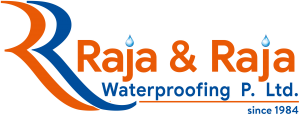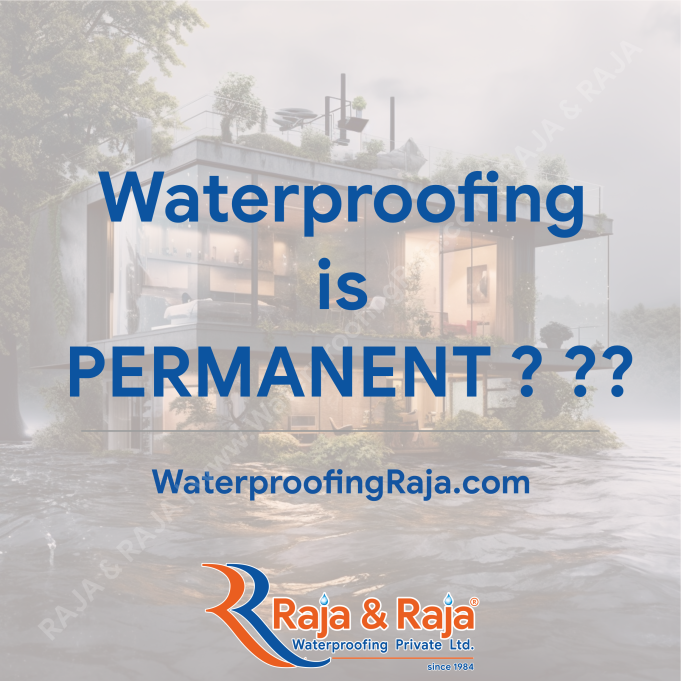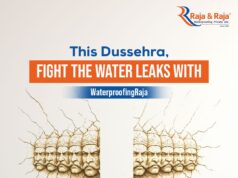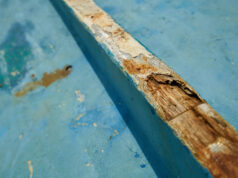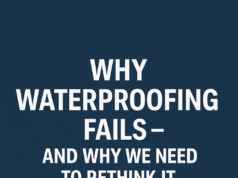Most of us would have often heard by manufacturers, applicators and engineers that “Waterproofing is not permanent”.
It’s TRUE!;
Waterproofing is Not Permanent, but it came be long lasting. 📣
But have you explored why?
These facts are played to escape the service liabilities by contractors, construction workers and engineers who want to do waterproofing without technical know-how, skillsets and experience.
Simplest to say, Water would find the way, but we have to seal all the possible spots to enter or to exit.
Remedial Waterproofing requires:
- Technical Knowledge & skill to analyse the structure and sources which let water entry
- Ability to identify not only the suitable product but the robust system as whole
- Compliance to the manufacturer’s recommended application process and fundamentals of Waterproofing.
To Waterproof the structure is to ISOLATE from Water.
Here’s the technical part of why Waterproofing is not permanent!
Ageing and settling of structure:
As structures age, they can settle, disrupting the integrity of waterproofing systems. This can create gaps, cracks or openings that may not be withstandable by the Waterproofing system applied, which could lead to failure.
Wear and tear:
Over time, waterproofing materials can degrade due to exposure to environmental elements, temperature fluctuations, and physical stress of the structure. This can cause them to crack, shrink, or become brittle, making them less effective at staying watertight.
Environmental exposure:
The level of exposure to extreme weather conditions, such as heavy rainfall, high-temperature variation within a short time span, snow, or freeze-thaw cycles, can accelerate the degradation of waterproofing materials.
UV exposure:
Ultraviolet (UV) radiation from the sun can break down certain materials, particularly those exposed to direct sunlight. This can cause degradation and fading, reducing the effectiveness of the waterproofing protection, which might be kept exposed.
Ozone attacks:
Ozone is a form of oxygen that is highly reactive and can break down the molecular bonds in various natural and man-made materials. This can lead to cracks, tears, and other damage allowing water to seep. In particular, butyl rubber is susceptible to ozone attack, so it is not recommended for use in exposed waterproofing applications.
Chemical and biological degradation:
Harsh chemicals, pollutants, and biological organisms (such as mould, algae, and fungi) can interact with waterproofing materials, causing deterioration or weakening of the protective layers.
Improper installation:
The effectiveness and longevity of waterproofing solutions depend on their proper installation. Incorrect application or inadequate preparation can result in vulnerabilities compromising the waterproofing system’s ability to resist water.
Movement and expansion:
Structures, particularly large buildings, bridges, or dams, can undergo expansion and contraction due to temperature changes or load variations. These movements can cause stress on waterproofing layers, leading to potential damage or separation.
Inadequate maintenance:
Regular maintenance is crucial for ensuring the long-term efficacy of functional and aesthetic aspects in any system, such as facade, decor or waterproofing. Failure to maintain the system’s integrity, such as clearing clogged drains or gutters, can lead to water buildup and eventual breaches.
Material lifespan:
Different waterproofing materials have varying lifespans. Some products offer protection for several years, while others need periodic replacement or reapplication.
Advancements in technology:
As technology and materials evolve, newer, more durable waterproofing solutions may become available. This can render older waterproofing methods relatively less effective over time.
#WaterproofingRaja #waterproofing #construction #waterproof #roofing #waterproofingsolutions #waterproofingexperts #waterproofingspecialist #building #concrete #coating #architecture #waterproofingcoating #waterproofingmembrane #roof #design #repainting #renovation #roofwaterproofing #basementwaterproofing #realestate #waterproofingsystem #homeimprovement #contractor #floorcoating #flooring #mumbai #waterproofingmumbai #waterproofingproducts
